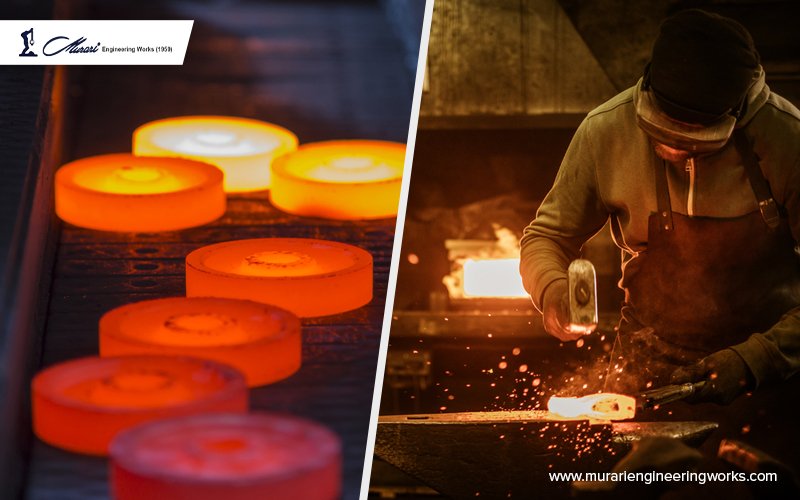Metal-based materials are essential in all fields, be it agriculture, kitchen items, or automobiles. We may not even be aware of it, but everything around us is either forged or cast.
Both forging and casting processes have a similar output- to create a particular shape of a material.
Many methods reshape the metal piece, yet only forging and casting shape the metal from raw material.
However, there is a noticeable difference in their process and the advantages they offer.
What is Casting?
The process of casting begins with creating a pattern. The components used to make the pattern include wax, sand, plastic, or wood.
During the casting process, the metal to be shaped is heated at a high temperature until it is liquified.
The liquified molten metal is poured into a prepared mould or pattern. The mould is either made of die or sand.
The molten metal is kept in the mould until it cools down and solidifies to form the shape of the mould.
The casting process is divided into two categories, depending on the type of mould.
- Reusable moulds
Generally, metal is used to create reusable moulds.
- Expendable moulds
The expendable/one-time moulds are made of either sand, plaster, or ceramic shell.
The casting process can be used for shaping both ferrous (steel, malleable iron, gray iron) and non-ferrous (Aluminium, Bronze, Copper) alloys.
What is Forging?
Forging is the process of shaping metals using force.
In ancient times, blacksmiths heated the metal at a very high temperature. Keeping the heated metal on an anvil, they used to hammer it to form the desired shape.
The heating temperature and pressure depend on the metals’ properties. Heavier metals undergo heat forging, and the softer metals- cold forging.
Forging metals include Stainless steel, Aluminium, and Titanium.
Process of Forging
The metal piece is heated above recrystallization temperature. The heating process reduces the hardness and increases the ductility.
Various methods are exerted for shaping the metal piece. This includes grinding, hammering, moulding, compressing, and bending.
Advantages of Casting
- It is widely used to cast any type of material.
- With casting, both internal and external shape is possible.
- The casting tools are inexpensive.
- The piece obtained after casting is isotropic. This means that it has the same physical and mechanical properties throughout.
- Casting is possible for any size material.
- Casting is beneficial for shaping complex parts.
- It gives a high production rate.
- It is ideal for short production runs.
Advantages of Forging
- It provides enhanced surface finish quality.
- The forged material has tight tolerance dimensions.
- The forged piece is strong (tight grain structure) and reliable.
- The finished product does not falter in performance at higher temperatures.
- The forging materials are less expensive.
- The forging materials have high precision and thus give exact dimensions of the finished metal.
Final Thoughts
Both casting and forging have different industrial applications. While forging is advantageous for one, others might be satisfied with casting.
With Murari Engineering Works, you don’t have to fret about the quality of the forged products. We are one of the leading forging units in Punjab. Our team works diligently to provide a satisfactory finished product to our customers.

